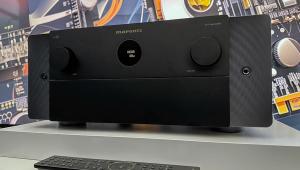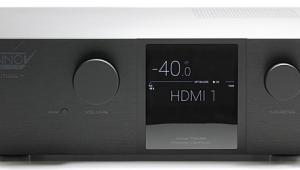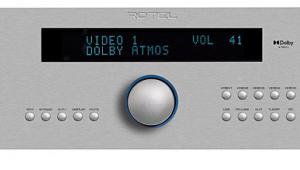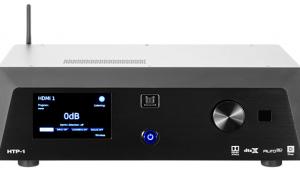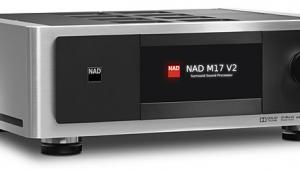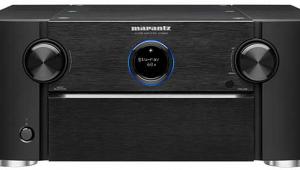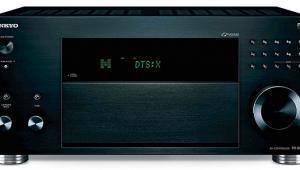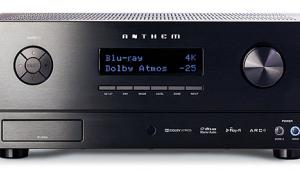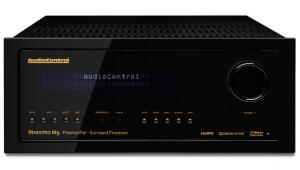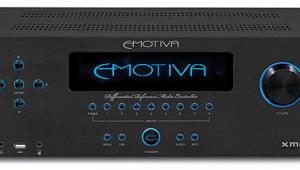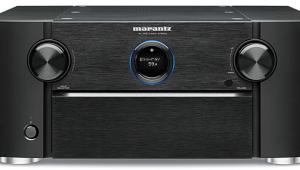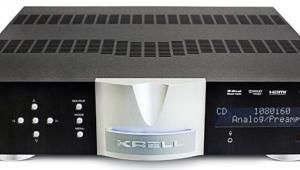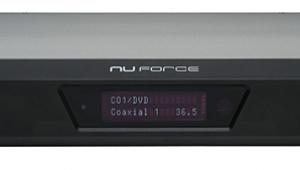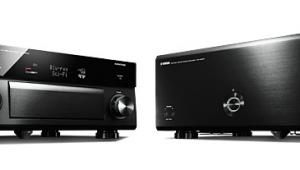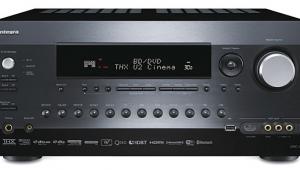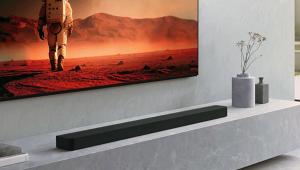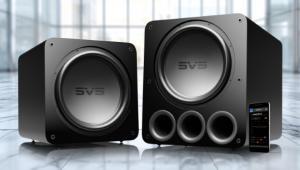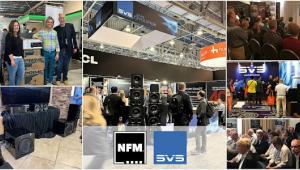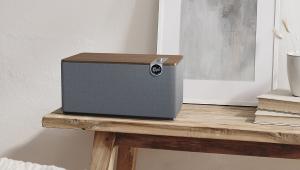Integra DHC-80.3 Surround Processor and DTA-70.1 Amplifier HT Labs Measures
Integra DHC-80.3 Surround Processor
Analog frequency response in Direct mode:
–0.05 dB at 10 Hz
–0.00 dB at 20 Hz
–0.01 dB at 20 kHz
–0.04 dB at 50 kHz
Analog frequency response with signal processing:
–0.30 dB at 10 Hz
–0.08 dB at 20 Hz
–0.28 dB at 20 kHz
–33.54 dB at 50 kHz
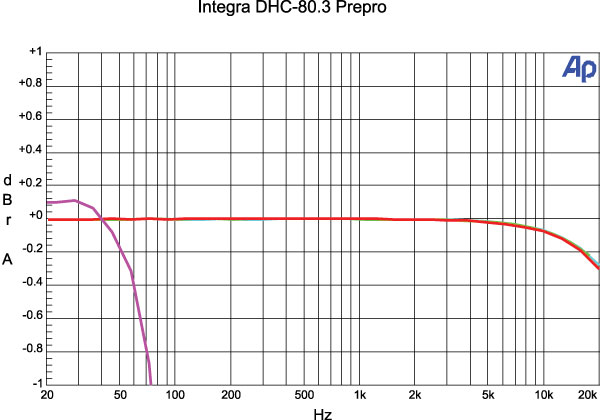
The above chart shows the frequency response of the left (aqua), center (green), LFE (purple), and left surround (red) channels at the preamp outputs of the Dolby Digital decoder. The left channel measures –0.01 decibels at 20 hertz and –0.28 dB at 20 kilohertz. The center channel measures –0.00 dB at 20 Hz and –0.26 dB at 20 kHz, and the left surround channel measures –0.01 dB at 20 Hz and –0.30 dB at 20 kHz. The LFE channel, normalized to the level at 40 Hz, is +0.11 dB at 20 Hz, reaches the upper –3-dB point at 96 Hz, and reaches the upper –6-dB point at 116 Hz.

Response from the multichannel input to the main output measures –0.05 dB at 10 Hz, –0.01 dB at 20 Hz, –0.01 dB at 20 kHz, and –0.04 dB at 50 kHz. The analog THD+N is less than 0.015 percent at 1 kHz with a 100-millivolt input and the volume control set to 84.5. Crosstalk with a 100-mV input was –94.93 dB left to right and –95.21 dB right to left. The signal-to-noise ratio with “A” weighting was –124.97 dBrA.—MJP
Integra DTA-70.1 Amplifier
Seven channels driven continuously into 8-ohm loads:
0.1% distortion at 111.5 watts
1% distortion at 125.2 watts
Five channels driven continuously into 8-ohm loads:
0.1% distortion at 119.1 watts
1% distortion at 137.7 watts
Frequency response RCA input:
–0.06 dB at 10 Hz
–0.02 dB at 20 Hz
+0.06 dB at 20 kHz
–2.63 dB at 50 kHz
Frequency response XLR input:
–0.06 dB at 10 Hz
–0.02 dB at 20 Hz
–0.05 dB at 20 kHz
–2.80 dB at 50 kHz

This graph shows that the DTA-70.1’s left amplifier channel, with two channels driving 8-ohm loads, reaches 0.1 percent distortion at 154.7 watts and 1 percent distortion at 177.7 watts. Into 4 ohms, the amplifier reaches 0.1 percent distortion at 230.2 watts and 1 percent distortion at 266.7 watts. An input level of 100 millivolts was required to produce an output of 2.83 volts into an 8-ohm load, indicating an overall gain of +29.02 decibels using the RCA input. When using the XLR input, a level of 200 millivolts was required to produce an output of 2.83 volts into an 8-ohm load, indicating an overall gain of +23.02 dB.
THD+N from the amplifier was less than 0.033 percent at 1 kilohertz when driving 2.83 volts into an 8-ohm load using the RCA input. When using the XLR input under the same conditions, THD+N was also less than 0.033 percent. Crosstalk at 1 kHz driving 2.83 volts into an 8-ohm load was –78.78 dB left to right and –85.55 dB right to left using the RCA inputs and –77.69 dB left to right and –92.72 dB right to left using the XLR inputs. The signal-to-noise ratio with an 8-ohm load from 10 Hz to 24 kHz with “A” weighting was –109.79 dBrA using the RCA input and –106.30 using the XLR input.—MJP

